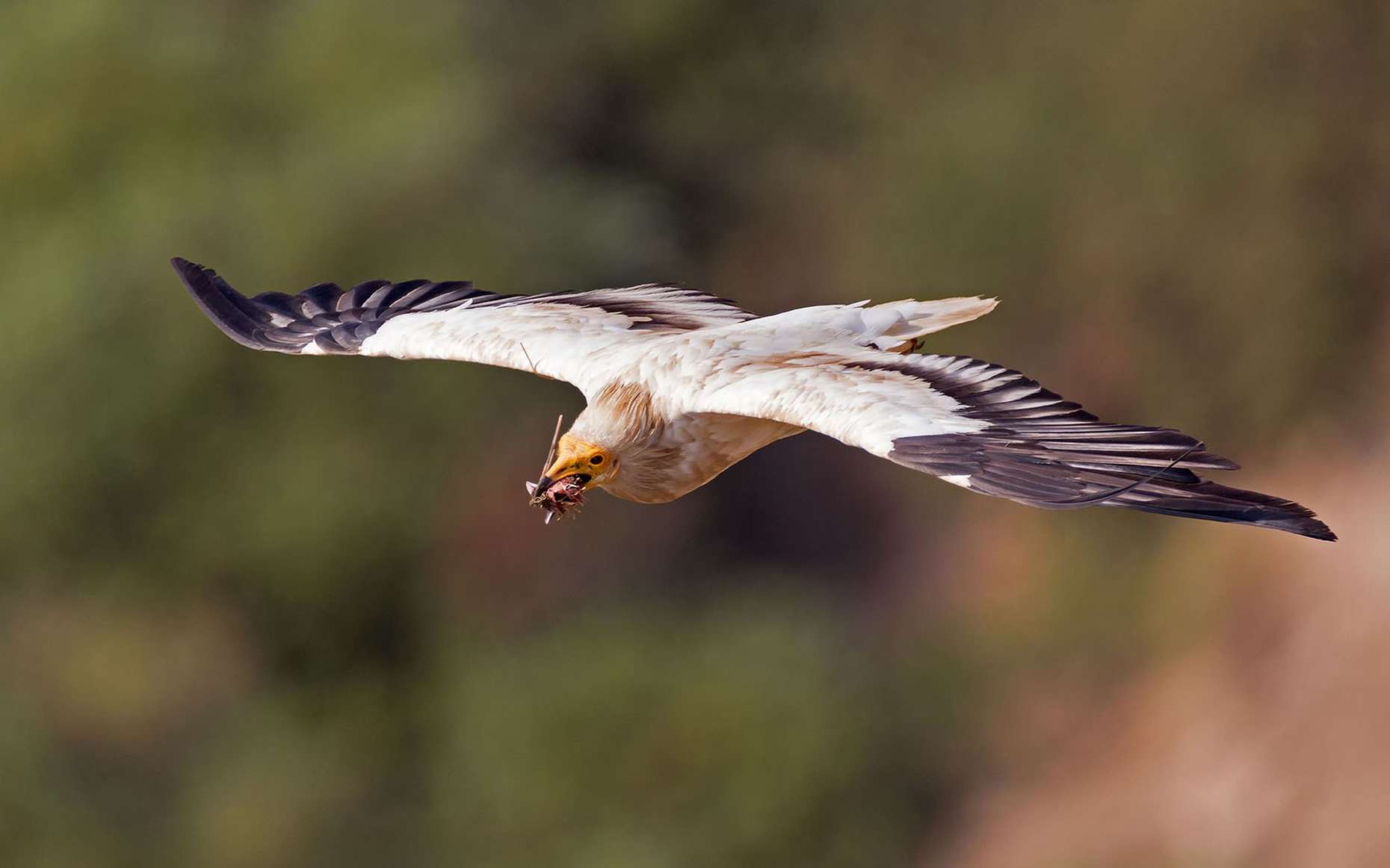
This little vulture, a great intercontinental migrant, returns from Africa in March to nest in our mountains in the south of France. But the species, with its particularly useful scavenger role, is in decline. Its French population would number less than 100 pairs… However, this very special bird has a strong cultural identity with human populations.
For the filming of a documentary in Provence, I explored with my team the French Mediterranean region from the Blue Coast to Haute-Provence, in search of its emblematic biodiversity and the human-animal bond. In the splendid Luberon massif, an ecosystem of low limestone and rocky mountains covered with scrubland and dry forests, we sought out one of the rarest birds of prey in France: the Egyptian vulture (Neophron percnopterus). A very complicated name for this little dirty white vulture with black wings (perknos-pteron means “wing spotted with black” in Greek) and with a bare orange-yellow face, which measures 70 cm, weighs about 2 kilos and has a wingspan of 1.70 metres.
Corpses, cow dung, insects or even ostrich eggs: the Egyptian vulture has an extremely varied diet
Essentially a scavenger, that is to say a scavenger, it specializes in cleaning the carcasses of mammals. It focuses in particular on tendons, shreds of skin and remains of flesh that are difficult to reach for the massive beaks of the largest vultures, such as the griffon vulture or the black vulture. But the bird, opportunistic, is also interested in animals crushed on the roads – reptiles, amphibians or small mammals – even alive, insects and chicks. It even knows how to be coprophagous, occasionally feeding on cow dung. By consuming corpses and excrement, the species plays a crucial ecological role: it contributes to limiting the organic contamination of the natural environment and the agrosystem, in particular pastoral. In Africa, the Egyptian vulture sometimes uses a stone to split the thick shell of an ostrich egg!
But the threats to the Egyptian vulture are ever more intense: power lines, poisoning, loss of habitat and human disturbances are the best known. The species is considered Endangered (EN) by the IUCN (International Union for Conservation of Nature), both globally and nationally, with an overall decreasing trend. There are less than a hundred breeding pairs in France, exclusively in the Pyrenees (60 to 70 pairs) and the southeast (about twenty pairs).
A threatened ecosystem servant, the Egyptian vulture is also a cultural figure
From a “biocultural” point of view, that is to say both biological and cultural, the raptor is however a particularly rich case. The species, which is distributed on three continents, is migratory in Europe where it comes to nest from March to September. It is sedentary or wintering in the Saharo-Sahelian area, and strictly sedentary in South Asia, the Canary Islands or Arabia.
In India, I was able to observe individuals very close to humans, nesting on urban buildings, and frequenting public dumps. In Egypt, its place in the culture comes from the pharaonic protection which was granted to it in the old polytheistic worships, being worth to him to incarnate the first letter of the hieroglyphic alphabet.
In Spain, the Egyptian vulture is present on very tourist sites and around certain slaughterhouses, where it is easy to observe. From Portugal to Turkey via Italy and Greece, the legends concerning the bird are numerous, associating it with the Phoenix, with death or with ancient myths which sometimes contribute locally to its protection. In the south of France, these birds of prey also have a special cultural status. The bird is locally called Dame blanche or Marie-blanque in the Pyrenees, and “Peyre blanc” in the Luberon. At the end of winter, the return of the Egyptian vulture symbolically announces the arrival of spring.
Careful monitoring for an uncertain future
France represents the northern limit of its European range. But these little vultures are shy and difficult to locate there, which helps to fuel their status as mystical birds for naturalists. We therefore had to multiply the hides to succeed in observing and filming the Egyptian vultures, despite being at the heart of their nesting territory. With the Conservatoire d’Espaces Naturels de Provence-Alpes-Côte-D’azur (CEN Paca), I attended in July the abseiling of volunteers along steep walls, to manage to band young individuals ready to take off. This is to ensure their scientific monitoring, and to be able to identify them during potential future observations. Some Egyptian vultures are even equipped with beacons to track their movements to the Sahel.
Initially brown with a greenish face, the juveniles do not turn white until their fifth year. At this age, they start looking for a partner and a territory to reproduce. But before that, they will have to cross the Mediterranean, the Sahara and the human habitat six times, sometimes hostile to their presence, sometimes admiring this unique and legendary animal figure.




GIPHY App Key not set. Please check settings